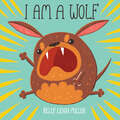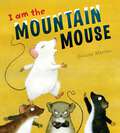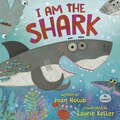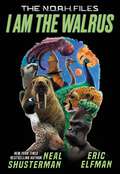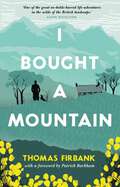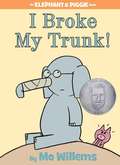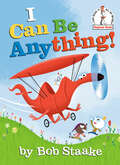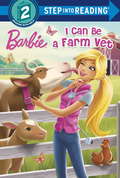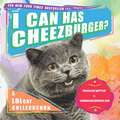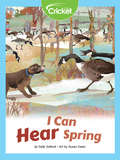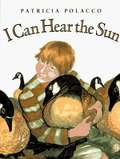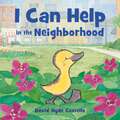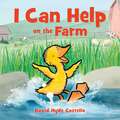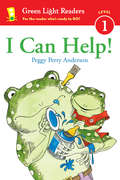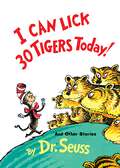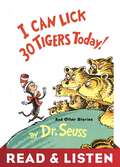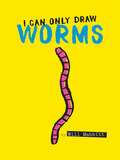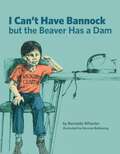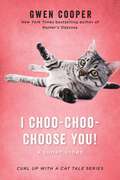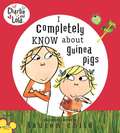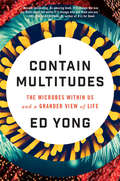- Table View
- List View
I Am a Wolf
by Kelly Leigh MillerA dog who insists she's a wolf finds the perfect home with a young girl who sees past her prickly personality in this pet adoption story that's as laugh-out-loud funny as it is heart-tugging.When a particularly growly pup finds herself in an animal shelter, she insists that she is a wolf--a lone wolf. After all, she's not sweet, she's not cute, and she is just fine on her own! Luckily, there's one little girl at the shelter who knows that sometimes, good dogs act bad when they feel afraid and that extending a little kindness can help even the most wolfish pup at the pound let down her guard.
I Am the Mountain Mouse
by Gianna MarinoHere is a timely tale of a mouse who thinks he&’s a lot braver and better than anyone around him. Undaunted by extreme heights, wild animals, or angry birds, this mouse is determined to conquer every obstacle in his path. He climbs, dives, and does all that he can to prove how brave he is. "I am the mountain mouse!" he shouts when he summits his first not-quite-mountain. And this is usually the warning for his minions to take cover . . . because what they see and what Mountain Mouse sees are never quite the same! Full of slapstick silliness and adventurous antics, I Am the Mountain Mouse points out how ridiculous a big ego can be . . . in a quite deliciously over-the-top way!
I Am the Shark
by Joan HolubWhat makes the great white shark (one of) the greatest fish in the sea? FIN-d out in this hilarious fish-out-of-water story that's perfect for Shark Week and all year-round!"Don't miss this one." -School Library Journal, Starred Review Hi! I am Great White Shark, and if you get this book, you'll read all about ME--the greatest shark in the sea!Not so fast! Greenland Shark here, and as the oldest shark in this book, that makes me the greatest. Did someone say fast? I'm Mako Shark, and I'm the fastest shark in this book! Eat my bubbles!Wow, I'm Hammerhead Shark. You don't need my special eyes to see that there are lots of great sharks in this book. Sink your teeth into it now!New York Times bestselling author Joan Holub makes a splash with bestselling illustrator Laurie Keller to deliver an entertaining undersea story filled with the greatest shark facts in the ocean!
I Am the Walrus (The N.O.A.H. Files #1)
by Neal Shusterman Eric ElfmanEoin Colfer meets Rick Riordan—with a little Margaret Peterson Haddix sprinkled on top—in this hilarious sci-fi series from New York Times bestselling authors Neal Shusterman and Eric Elfman. When fourteen-year-old Noah falls from the trees on his classmate Sahara, he doesn&’t understand how, or why, he would have been up there. It&’s just one more in a string of strange things happening to Noah lately. Like when he keels over and every muscle in his body freezes when confronted by bullies. And when he vanishes into the background at a moment he doesn&’t want to be noticed. And when he unexpectedly blasts Sahara with a bird shriek while flapping his arms uncontrollably in the middle of a school dance. What does it all mean? And why do there suddenly seem to be so many mysterious people trying to kill him? Noah&’s friend Ogden has an idea…but like all of Ogden&’s ideas, it&’s out there. Way out there…
I Bought a Mountain: The Rediscovered Nature Classic
by Thomas FirbankWITH A FOREWORD BY PATRICK BARKHAMAnd an essay by Welsh hill farmer, Dafydd Morris-Jones'I first saw Dyffryn in a November gale... the old house was quivering under the thrusts of the wind, and the wild, remote setting had already captured my fancy, and I will hold it till I die.'So begins the remarkable story of a 21-year-old man who, with no experience in agriculture, visited a sheep farm on a near barren Welsh mountainside in 1931 and that same day bought all 2,400 acres along with its 3000 sheep for £5,000.Set amidst the rugged grandeur of Snowdonia, I Bought a Mountain follows the struggles and triumphs of this impulsive but hard-working man and his every-bit-as-tough wife, Esme, as they fight to build the farm into prosperity.Firbank's writing is guileless and immediate and ruthlessly honest. His paean to the traditional, Welsh hill-farming way of life, transports you to a disappearing world, one ruled by the age-old rhythms of work, weather, livestock and a love of the land, and offers precious insights into conservation and sustainability.
I Broke My Trunk! (An Elephant and Piggie Book)
by Mo WillemsMeet Elephant Gerald and Piggie.<P><P> Gerald is careful. Piggie is not.<P> Piggie cannot help smiling. Gerald can.<P> Gerald worries so that Piggie does not have to.<P> Gerald and Piggie are best friends.<P> In I Broke My Trunk! Gerald tells Piggie the long, crazy story about breaking his trunk. Will Piggie end up with a long, crazy story of her own?<P> Winner of the Theodore Seuss Geisel Honor
I Can Be Anything! (Beginner Books(R))
by Bob StaakeA shape-shifting lizard becomes anything he wants in this funny--and empowering--Beginner Book by award-winning illustrator Bob Staake!The giant lizard star of Bob Staake's Beginner Book Can You See Me? is back--and this time, instead of changing colors, he's changing shapes. (Very un-lizard-like shapes, including a robot on a dairy cow, a surfboard for a whale, and a one-eyed, green-headed monster!) Featuring simple rhymed text and high-energy graphic-style illustrations, this cheerful, funny easy reader is exactly what Dr. Seuss had in mind when he launched the Beginner Books series in 1957 with The Cat in the Hat. What's more, Staake's charming lizard shares an empowering "You can do it!" message with young readers.
I Can Be a Farm Vet (Barbie)
by Apple Jordan Kellee RileyBarbie learns all about being a farm vet in this deluxe Step 2 Step into Reading leveled reader that's perfect for animal-loving children ages 4 to 6. Step 2 Readers use basic vocabulary and short sentences to tell simple stories. For children who recognize familiar words and can sound out new words with help.
I Can Has Cheezburger?: A LOLcat Colleckshun
by Professor Happycat icanhascheezburger.comThe Internet has provided us with many wonders, from skateboarding dogs to Chuck Norris facts. Over the past year, though, one sensation has dominated the Web: LOLcats. Here&’s how it works: First you find a picture of a cat online, and then you add a caption that reflects the cat&’s point of view. Just remember that although cats can speak English, their spelling and grammar is not so hot. Once you&’re done, you have a LOLcat (laugh out loud cat). Since its founding in January 2007, icanhascheezburger .com (named after the most famous LOLcat of all) has been the center of the LOLcat world. I Can Has Cheezburger? collects 200 LOLcats from the enormously popular site, some classic and some new, in glorious and glossy full color. The book also highlights legendary LOLcat forms recognizable to fans everywhere (including &“Do Not Want,&” &“Monorail Cat,&” and &“Oh Noes!&”), and offers a guide to the finer points of LOLspeak. Packed with witty and endearing images and published into a proven cat-egory, I Can Has Cheezburger? is sure to delight feline aficionados and Internet nerds alike.
I Can Hear Spring
by Sally SelleckHow do you know that spring is finally coming? The geese, of course! All you have to do is look for the V-shape in the sky and listen for all that honking as they migrate back from Canada!
I Can Hear the Sun: A Modern Myth
by Patricia PolaccoIn true Polacco fashion, the bestselling author of Chicken Sunday and Thunder Cake masterfully intertwines the sensitive themes of homelessness, friendship, and faith into a modern myth that is sure to make believers of us all. An orphaned, homeless boy's love for the geese in a nature park renews everyone's faith in miracles, as he employs his special ability to listen to the sun. Full color.
I Can Help in the Neighborhood (I Can Help)
by David Hyde CostelloWith irresistible art and a timeless message,I Can Help in the Neighborhood shows how one act of kindness can lead to another – capturing the joy of paying it forward.Uh oh. Duck is lost. Luckily, Rabbit is around to help! Rabbit hops over the tall grass to reunite the lost duckling with their family. But soon, Rabbit needs help, too. We also meet a pigeon, raccoon, and many more animal friends, who all find themselves in tight spots around the neighborhood. But don’t worry, there’s always an animal friend ready to lend a hand!Don’t miss the first book in the series: I Can Help!
I Can Help on the Farm (I Can Help)
by David Hyde CostelloFeaturing adorable farm animals, this is the third installment in the I Can Help picture book series that illustrates the rippling effects of kindness - perfect for toddlers, preschools, and as a baby shower gift.Uh-oh. Duck is lost. But don’t worry. From dogs and chickens to sheep and goats, there are plenty of animals happy to help Duck. On the busy farm, there’s always someone ready to lend a hand! Don’t miss the other books in the series: I Can Help and I Can Help in the Neighborhood
I Can Help! (Green Light Readers Level 1)
by Peggy Perry AndersonWatch out! Rambunctious Joe is helping Mom run errands around town and Dad do chores around the house. But sometimes that leads to more mishaps and mischief than anyone in this loving frog family expects.. . and sometimes it can lead to a very bright idea. Simple words and dialogue create a perfect reading experience for Level 1 Green Light Readers.
I Can Lick 30 Tigers Today! and Other Stories (Classic Seuss)
by Dr. SeussA lesser-known collection of classic Dr. Seuss stories about humility, equality, and the power of imagination!This collection of three rhyming stories by Dr. Seuss features a whole litter of Cat in the Hat-like cats! In "I Can Lick 30 Tigers Today!" a boastful cat bites off more than he can chew in the shape of 30 tigers; in "King Louie Katz"--a tale about tails--a single cat challenges authority and creates a more "demo-catic" society; and in "The Glunk That Got Thunk," a cat thinks up something so wild, she needs to un-thunk it! Beautifully illustrated in ink and watercolor, this quirky collection of Seussian silliness will be a welcome gift to Dr. Seuss fans of all ages.
I Can Lick 30 Tigers Today! and Other Stories (Classic Seuss)
by Dr. SeussDr. Seuss tells three rhyming tales featuring the extended family of the Cat in the Hat in I Can Lick 30 Tigers Today! And Other Stories. The Cat&’s son shows bravado in &“I Can Lick 30 Tigers Today!&” while his daughter gets a bit carried away imagining &“The Glunk That Got Thunk.&” And we look back at one of the Cat&’s ancestors for a tale about tails in &“King Looie Katz.&” This lesser-known collection of classic Seussian silliness will be a welcome addition to the libraries of fans of all ages!This Read & Listen edition contains audio narration.
I Can Only Draw Worms
by Will MabbittA hilarious picture book in bright, neon colors that is perfect for fans of The Book With No Pictures and The Day the Crayons Quit.This is part counting book, part introduction to worms, but all superbly silly. The fact that the author/illustrator can only draw worms will not take anything away from the laugh-out-loud adventure readers will have as they turn the pages of this slightly subversive picture book.
I Can Run (I Like to Read)
by Murray HeadA squirrel’s antics and entertaining photographs enliven a book for the newest reader at Guided Reading Level A. I can run. I can hop. I can jump. A simple text for the newest readers and fascinating photographs follow a captivating squirrel as he runs just for fun—and also to escape a scary hawk.
I Can't Get My Turtle to Move
by Elizabeth Lee O'DonnellA little girl tries to get her turtle to move.
I Can't Have Bannock but the Beaver Has a Dam
by Bernelda WheelerThis beloved Indigenous classic begins when a little boy asks, &“Mom, can I have some bannock?&” Despite having all the ingredients, Mom can&’t make bannock.As the little boy asks &“why,&” beginning readers learn about the connections between living things in an ecosystem through the ripple effects of a beaver building a dam.Children will be eager to chime in as Mom answers the little boy&’s questions about the power outage in their community and how it impacts his family. Enjoy Mom&’s bannock with your young reader using the recipe in the back of the book.
I Can't Have Bannock but the Beaver Has a Dam
by Bernelda WheelerThis beloved Indigenous classic begins when a little boy asks, &“Mom, can I have some bannock?&” Despite having all the ingredients, Mom can&’t make bannock.As the little boy asks &“why,&” beginning readers learn about the connections between living things in an ecosystem through the ripple effects of a beaver building a dam.Children will be eager to chime in as Mom answers the little boy&’s questions about the power outage in their community and how it impacts his family. Enjoy Mom&’s bannock with your young reader using the recipe in the back of the book.
I Can't Have Bannock but the Beaver Has a Dam
by Bernelda WheelerThis beloved Indigenous classic begins when a little boy asks, &“Mom, can I have some bannock?&” Despite having all the ingredients, Mom can&’t make bannock.As the little boy asks &“why,&” beginning readers learn about the connections between living things in an ecosystem through the ripple effects of a beaver building a dam.Children will be eager to chime in as Mom answers the little boy&’s questions about the power outage in their community and how it impacts his family. Enjoy Mom&’s bannock with your young reader using the recipe in the back of the book.
I Choo-Choo-Choose You!: A Short Story
by Gwen CooperBefore there was Homer the Blind Wonder Cat, there was Scarlett—the adorable, maddeningly aloof, gray rescue tabby . . . Every cat lover remembers the very first feline they fell in love with. For celebrated cat writer Gwen Cooper, that first love is Scarlett—a pint-sized rescue kitten with a king-sized personality. A natural-born troublemaker and wary at first after life on the streets, Scarlett is quick to win hearts with her kittenish mischief, but slow to open her own heart to the woman who saved her. Yet as the months go by, and bonds of trust are painstakingly forged link by link, Gwen begins to realize that the love you have to earn just may be the love that means the most. Poignant, tender, and laugh-out-loud funny, "I Choo-Choo-Choose You!" is the first in the Curl Up with a Cat Tale series of true short stories from Gwen Cooper—bestselling author of the smash hit Homer's Odyssey: A Fearless Feline Tale—and sure to warm the heart of any cat enthusiast. Read and fall in love for the first time all over again!
I Completely Know About Guinea Pigs
by Lauren ChildLola really likes guinea pigs. And she is absolutely VERY excited when Mrs. Hanson lets her take Bert, the class Guinea pig, home for the school vacation. Lola COMPLETELY knows how to take care of Bert. She gives him clean water every day, feeds him fruits and vegetables, and even makes him a guinea pig run. But then Bert escapes! He is COMPLETELY, extremely GONE! Will Charlie be able to help his little sister Lola find Bert before anything happens to him and before Lola has to go back to school?
I Contain Multitudes: The Microbes Within Us and a Grander View of Life
by Ed YongNew York Times BestsellerNew York Times Notable Book of 2016 • NPR Great Read of 2016 • Named a Best Book of 2016 by The Economist, Smithsonian, NPR's Science Friday, MPR, Minnesota Star Tribune, Kirkus Reviews, Publishers Weekly, The Guardian, Times (London)From Pulitzer Prize winner Ed Yong, a groundbreaking, wondrously informative, and vastly entertaining examination of the most significant revolution in biology since Darwin—a “microbe’s-eye view” of the world that reveals a marvelous, radically reconceived picture of life on earth.Every animal, whether human, squid, or wasp, is home to millions of bacteria and other microbes. Pulitzer Prize-winning author Ed Yong, whose humor is as evident as his erudition, prompts us to look at ourselves and our animal companions in a new light—less as individuals and more as the interconnected, interdependent multitudes we assuredly are.The microbes in our bodies are part of our immune systems and protect us from disease. In the deep oceans, mysterious creatures without mouths or guts depend on microbes for all their energy. Bacteria provide squid with invisibility cloaks, help beetles to bring down forests, and allow worms to cause diseases that afflict millions of people.Many people think of microbes as germs to be eradicated, but those that live with us—the microbiome—build our bodies, protect our health, shape our identities, and grant us incredible abilities. In this astonishing book, Ed Yong takes us on a grand tour through our microbial partners, and introduces us to the scientists on the front lines of discovery. It will change both our view of nature and our sense of where we belong in it.
